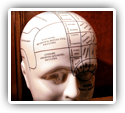
The Journal of Upper Cervical Chiropractic Research published a case study on February 23, 2017, documenting chiropractic bringing about the resolution of seizures of a woman suffering from epilepsy. The authors of the study define epilepsy by saying, “Epilepsy is a brain disorder that causes seizures in the absence of any underlying medical condition such as fever.”
Epilepsy is fairly common. The U.S. Centers for Disease Control (CDC) estimated that in 2013, 1.8% of the population, equaling 4.3 million adults over 18 years of age, suffered with this affliction. The CDC also estimated that 1% of those under the age of 18 also has epilepsy. This means that a total of 5.1 million people in the U.S. alone suffer with this problem at a cost of $15.5 billion in healthcare costs each year.
In this case, a 22-year-old woman went to the chiropractor seeking help for her health issues. At that time, she was suffering from daily headaches and was getting a seizure about every third day. Her seizures would last from several minutes to up to an hour. Her medical care for these problems consisted of medications, which were largely ineffective.
A chiropractic examination was performed which included a postural analysis, range of motion, orthopedic and neurological tests, thermographic studies, and x-rays. Findings of the test and x-rays were indicative of the presence of subluxation in the woman’s upper neck.
The patient completed a “Quality of Life in Epilepsy patient survey” (QOLIE-89) prior to beginning care to be used as a baseline, and to evaluate changes as care was rendered. On this initial test, the woman’s score was 29.27 indicating a very low quality of life. An average score for epileptic patients is 67.90 for this test.
As soon as chiropractic care was started, the patient reported that she stopped having headaches and no longer had any seizures. This improvement was noted after the very first visit and the patient remained headache-free and seizure-free throughout the course of her care. A follow-up QOLIE-89 survey was performed and the woman’s score had increased to 80.715, an improvement in her score of 51.445 points, which is 12.275 points higher than the average.
This case was not an isolated one as the authors also reviewed several previous studies of chiropractic care for people with epilepsy. What they noticed was that, of the 17 cases documented in studies, 14 of those patients who were taking medication for their seizures did not see any benefit. However, when these patients received chiropractic care, 15 of the 17 reported positive outcomes.
In their conclusion the authors wrote, “This case adds to a body of evidence of patient-reported improvements in seizure activity following a course of subluxation based chiropractic care.
